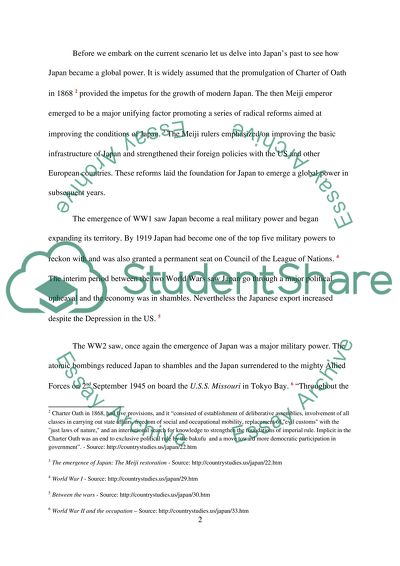Cite this document
(“Foreign Policies Japan Essay Example | Topics and Well Written Essays - 2000 words”, n.d.)
Foreign Policies Japan Essay Example | Topics and Well Written Essays - 2000 words. Retrieved from https://studentshare.org/miscellaneous/1513958-foreign-policies-japan
Foreign Policies Japan Essay Example | Topics and Well Written Essays - 2000 words. Retrieved from https://studentshare.org/miscellaneous/1513958-foreign-policies-japan
(Foreign Policies Japan Essay Example | Topics and Well Written Essays - 2000 Words)
Foreign Policies Japan Essay Example | Topics and Well Written Essays - 2000 Words. https://studentshare.org/miscellaneous/1513958-foreign-policies-japan.
Foreign Policies Japan Essay Example | Topics and Well Written Essays - 2000 Words. https://studentshare.org/miscellaneous/1513958-foreign-policies-japan.
“Foreign Policies Japan Essay Example | Topics and Well Written Essays - 2000 Words”, n.d. https://studentshare.org/miscellaneous/1513958-foreign-policies-japan.


